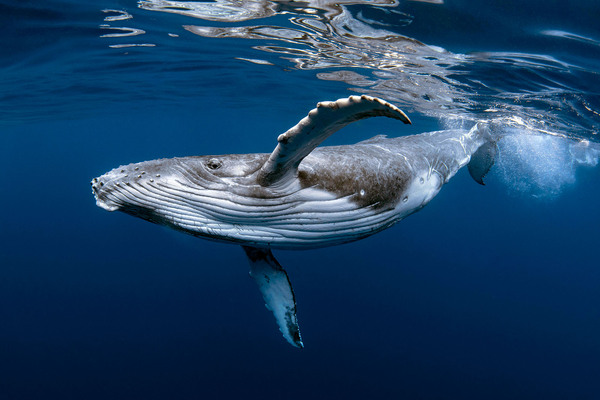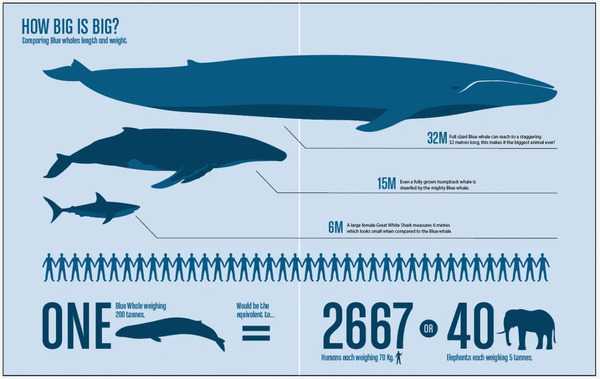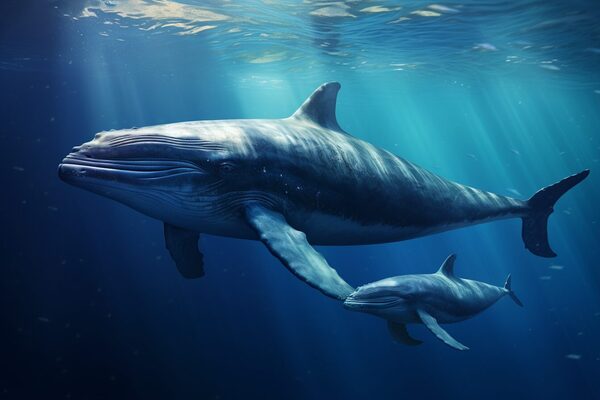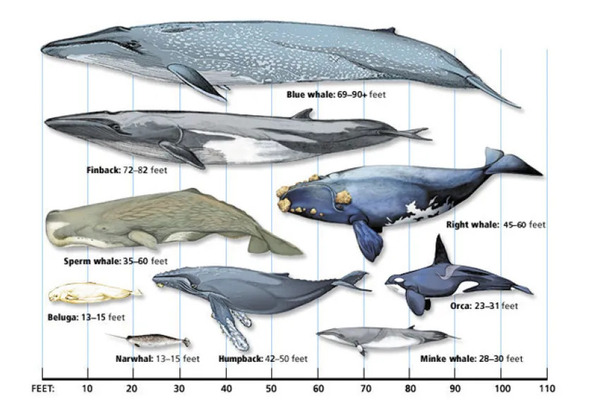When we think about the largest creatures on Earth, the blue whale (Balaenoptera musculus) immediately comes to mind. But is it really the largest animal to ever exist? In this article, we’ll explore the size of blue whales, compare them to other massive animals, and delve into fascinating facts about these gentle giants.

Blue whales are the largest animals known to have ever existed on our planet. They can grow up to 100 feet long (30 meters) and weigh as much as 200 tons (approximately 181 metric tonnes). To put that into perspective, their hearts alone can weigh as much as a small car, and their tongues can weigh as much as an elephant!

While blue whales are the largest animals today, it’s interesting to compare their size with other massive animals from both the present and the past:
Largest Dinosaur: The Argentinosaurus is believed to be one of the largest dinosaurs, reaching lengths of up to 100 feet (30 meters) and weights of around 100 tons (90 metric tonnes). However, even the largest dinosaurs pale in comparison to the sheer mass of blue whales.
Giraffes: Giraffes are the tallest land animals, reaching heights of up to 18 feet (5.5 meters). While they are impressive, they are dwarfed by blue whales in both length and weight.
Elephants: The African elephant is the largest land animal, weighing up to 14,000 pounds (6,350 kilograms). Again, this is minuscule compared to the massive size of a blue whale.
Blue whales are not only the largest but also one of the most fascinating animals:
Feeding Habits: Despite their size, blue whales primarily feed on tiny shrimp-like animals called krill. During feeding season, a blue whale can consume up to 4 tons (3.6 metric tonnes) of krill a day!
Vocalizations: Blue whales are known for their deep, resonant calls, which can be heard over vast distances in the ocean. Their vocalizations are among the loudest sounds made by any animal, reaching levels of up to 188 decibels.
Longevity: Blue whales can live for 70 to 90 years, with some individuals possibly reaching over 100 years.

Blue whales were heavily hunted during the 20th century, leading to a dramatic decline in their populations. Today, they are classified as endangered by the International Union for Conservation of Nature (IUCN). Conservation efforts are underway to protect these magnificent creatures and their habitats, but they still face threats from ship strikes, climate change, and entanglement in fishing gear.

In summary, the blue whale is indeed the largest animal to have ever existed on Earth. Its immense size and unique characteristics make it a true marvel of the natural world. Understanding and protecting blue whales is crucial not only for their survival but also for the health of our oceans. As we continue to learn more about these gentle giants, we gain insight into the wonders of marine life and the importance of conservation efforts to ensure their future.
animal tags: blue-whale
We created this article in conjunction with AI technology, then made sure it was fact-checked and edited by a Animals Top editor.